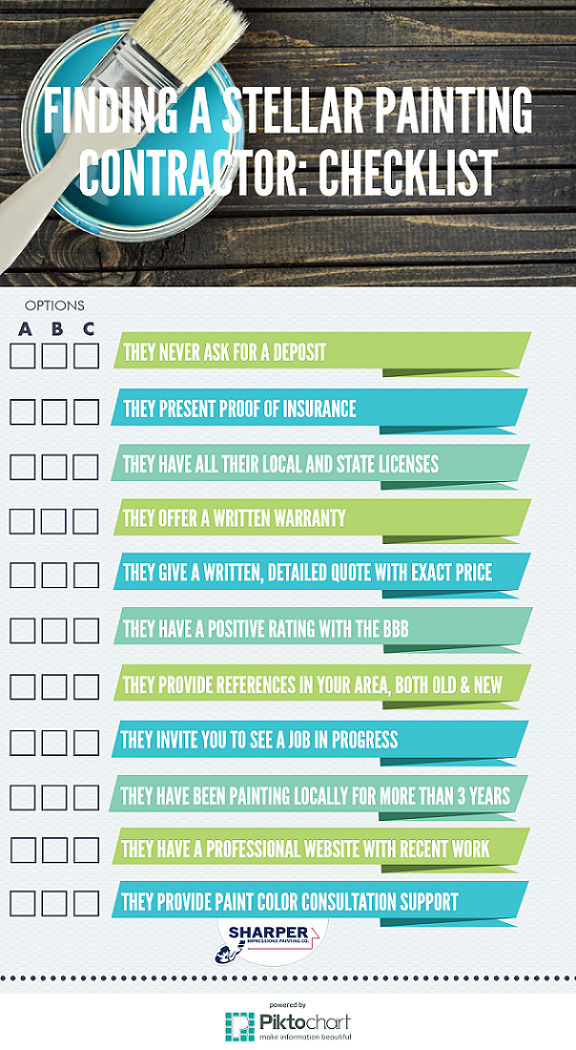Comprehending The Influence Of Weather Condition On Commercial Outside Painting: Necessary Insights
Comprehending The Influence Of Weather Condition On Commercial Outside Painting: Necessary Insights
Blog Article
Post Created By-Vilstrup Silver
When you're preparing a business external painting project, do not undervalue the influence of climate on your outcomes. You require to take into consideration factors like temperature, moisture, and precipitation, as they can make or break your paint work. For example, did you know that perfect problems call for details temperature arrays and moisture degrees? Failing to check these aspects can bring about irregular coatings and even damages to fresh paint. Recognizing these components is essential to attaining a long-lasting, specialist end result. So, what particular climate condition should you be wary of?
Temperature Considerations
When it pertains to commercial external paint, temperature plays a critical duty in the result of your project. If you're painting in extreme warmth, the paint can dry as well promptly, leading to problems like bad bond and uneven surfaces. You want to go for temperatures in between 50 ° F and 85 ° F for the best outcomes. Below 50 ° F, paint may not treat effectively, while over 85 ° F, you run the risk of blistering and splitting.
Timing your job with the right temperature levels is necessary. Beginning your job early in the morning or later on in the mid-day when it's cooler, particularly throughout warm months.
Additionally, think about the surface temperature level; it can be considerably higher than the air temperature, particularly on sunny days. Make use of a surface area thermometer to inspect this before you begin.
If temperatures are uncertain, keep an eye on the weather forecast. Abrupt temperature drops or heat waves can hinder your plans. You don't wish to start painting just to have the conditions change mid-project.
Humidity Degrees
Humidity levels substantially influence the success of your industrial outside painting project. When the moisture is expensive, it can prevent paint drying out and healing, causing a series of problems like inadequate adhesion and end up high quality.
If you're planning a job throughout damp conditions, you could locate that the paint takes longer to dry, which can prolong your task timeline and rise costs.
Alternatively, reduced moisture can additionally position challenges. Paint may dry too promptly, preventing correct application and resulting in an irregular coating.
You'll wish to keep track of the humidity levels closely to guarantee you're working within the perfect range, usually in between 40% and 70%.
To obtain the very best outcomes, consider utilizing a hygrometer to gauge moisture before beginning your job.
If you find the degrees are outside the ideal array, you might need to readjust your routine or select paints designed for variable problems.
Always speak with Highly recommended Reading for specific suggestions on moisture resistance.
Rainfall Influence
Rainfall or snow can considerably interrupt your industrial exterior painting strategies. When precipitation happens, it can wash away newly used paint or create an irregular surface. Preferably, you wish to choose days with dry weather condition to make sure the paint sticks effectively and remedies successfully. If you're captured in a shower, it's finest to halt the job and await problems to enhance.
Moreover, snow can be even more damaging. Not only does it develop a wet surface, but it can likewise lower temperatures, making it tough for paint to dry. This can lead to issues like peeling or blistering down the line.
It's crucial to check the weather forecast prior to starting your project. If retail store painting or snow is anticipated, take into consideration rescheduling.
Constantly remember to permit appropriate drying out time between coats, particularly if the weather remains uncertain.
Conclusion
Finally, keeping an eye on the weather condition is vital for an effective industrial external paint job. By keeping track of temperature, humidity, and precipitation, you can ensure the most effective problems for application and curing. Bear in mind to prepare your work around positive weather and always adhere to producer standards. With the best approach, you'll achieve a lasting, gorgeous coating that can endure the aspects. Don't let the weather catch you off-guard-- stay educated and repaint clever!
